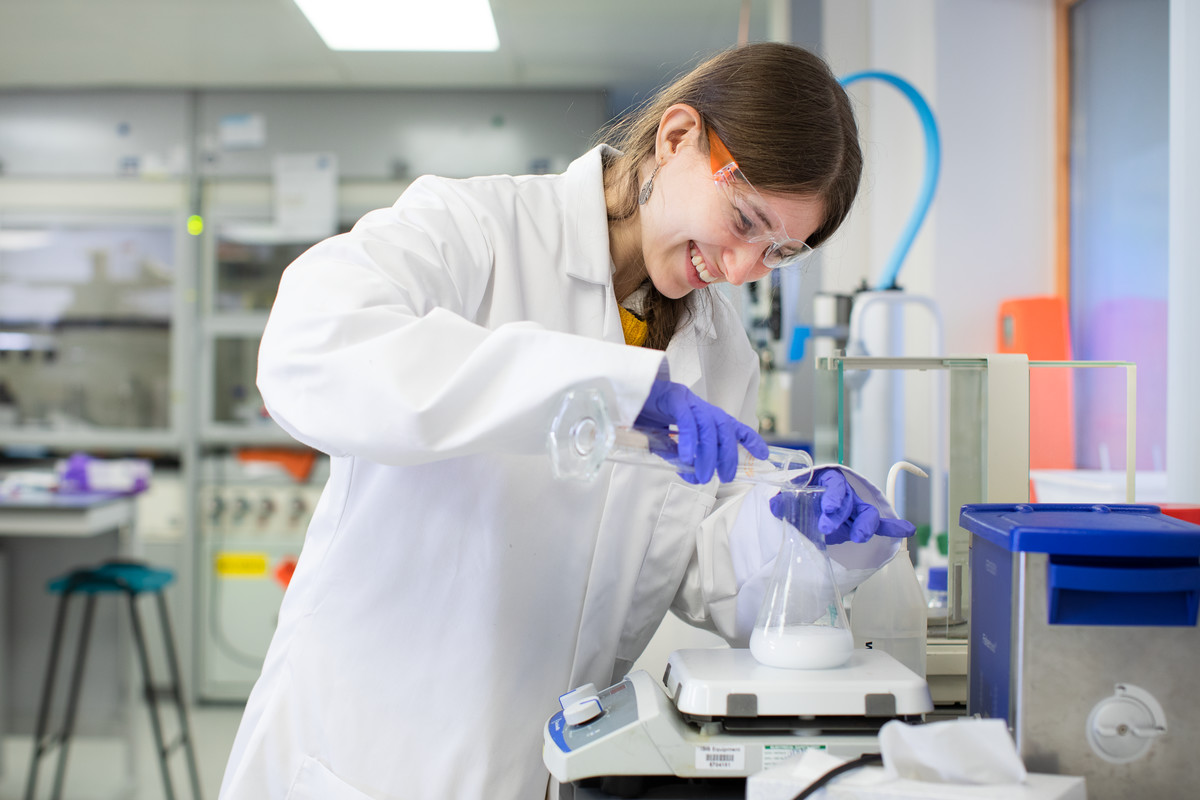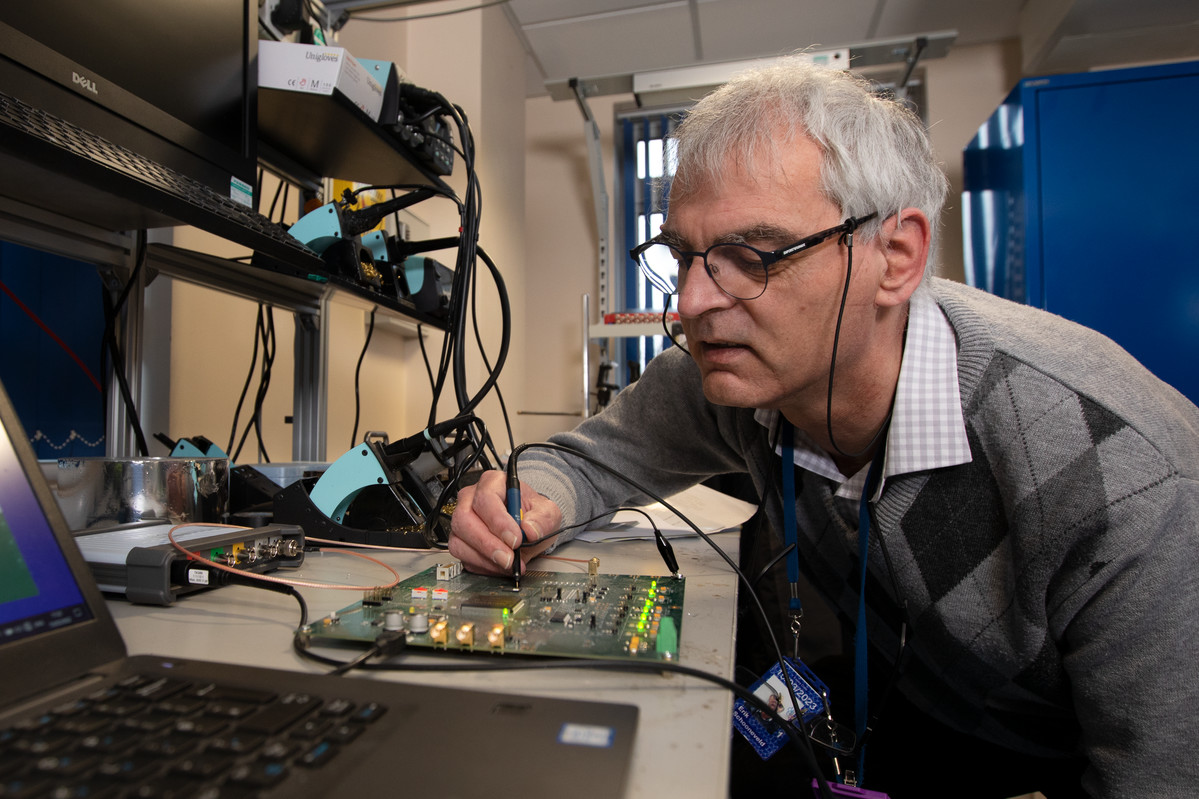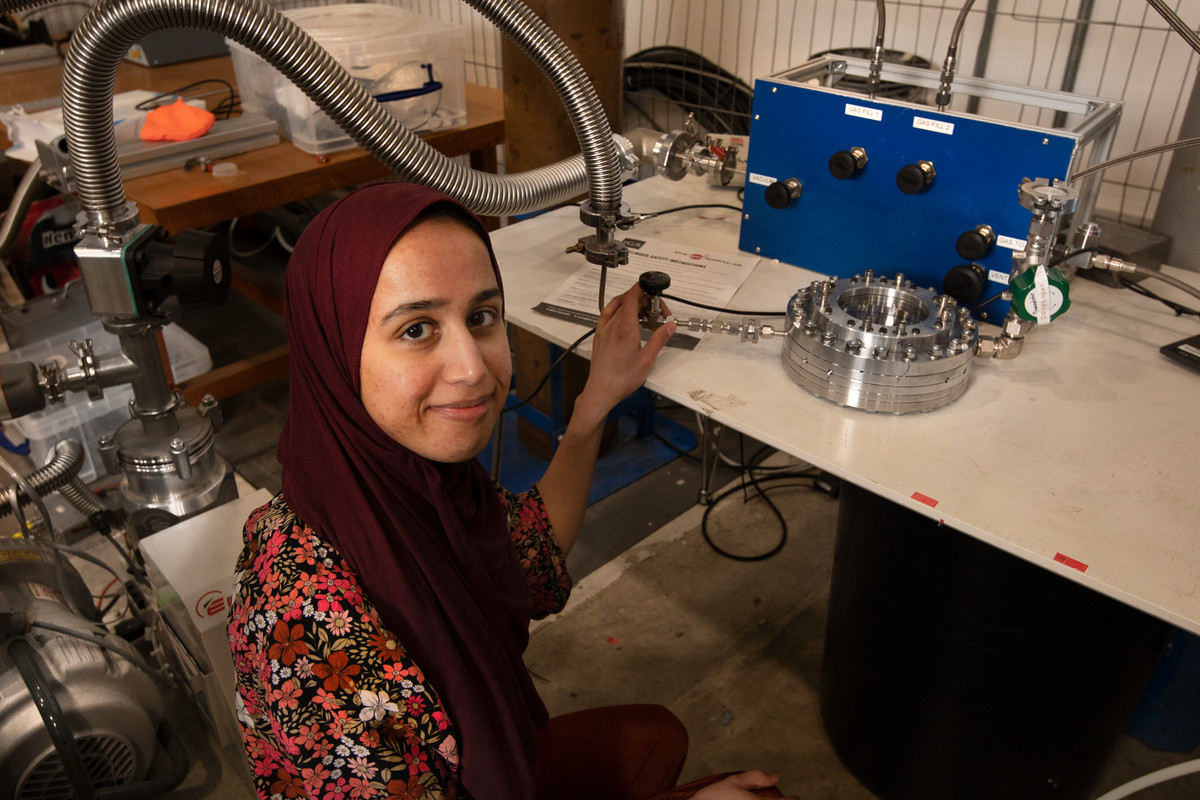A team that is very important to the ISIS Facility is the Detector group. Their role involves maintaining the detectors on all the instruments as well as doing their own research work. They are responsible for the design, development and evaluation of all of the neutron and muon detectors used here at the facility. The detector group consists of 15 members having broad ranges of expertise with physicists, engineers and technicians.
Sarah Mann is a PhD student working at ISIS. Her PhD project involves working on scintillation detectors and trying to improve their rate capability. Her role also involves helping with the maintenance of these detectors. “I really like getting to see all the different aspects of ISIS from a neutron detection perspective.”
“I did a sandwich student placement here in 2018 before going back to university and finishing my masters, I then came back here as a PhD student working in the same group with the same supervisor so was able to sort of carry on my work”

“When I Started my placement year I was really unsure with what I wanted to do but then I found I really loved it here, I really like that you get time to do things properly, you get time to go back and fix your mistakes and get things done well.”
Sarah’s inspiration to pursue STEM initially came from her love of maths, however as time went on she found herself finding physics more interesting, especially the problem solving aspect of it, “In my free time I enjoy solving puzzles, escape rooms and that type of thing and I feel now that I get to do that in a job.” “The role isn’t just about memorising answers it’s about working through the problems”.
“My favourite part of my role is the freedom; I get to go wherever the science is taking me” as well as the freedom her role offers Sarah also enjoys using the high tech machinery that is here at the facility.
Erik Schooneveld is the section leader for research and development in the detector group. His role sees him heavily involved in the development of the new electronics required to keep the detectors up to date. “Before a new big detector is installed we want to first figure out what are the requirements, can we match them with what we can build and then move on to making prototypes and testing them, I do the electronics and that sees me involved in all of the types of detectors.”
 Erik joined ISIS 25 years ago. At that point it was only him working in the detector development as there were far fewer beamlines compared to today. “I started off doing the hands on work, development, building prototypes and taking measurements.” Fast forward to today and there are now three groups within the section and whilst the numbers have grown the job has remained relatively similar. “I always liked electronics but did physics. In my masters there was a nice project about building radiation detectors, I thought this was a great match; building instrumentation is a nice combination of the two”
Erik joined ISIS 25 years ago. At that point it was only him working in the detector development as there were far fewer beamlines compared to today. “I started off doing the hands on work, development, building prototypes and taking measurements.” Fast forward to today and there are now three groups within the section and whilst the numbers have grown the job has remained relatively similar. “I always liked electronics but did physics. In my masters there was a nice project about building radiation detectors, I thought this was a great match; building instrumentation is a nice combination of the two”
“My favourite part about my role is the challenge, at first glance you think you can never do it, then you go away and discuss with people how you can do it and you try and try and then when you accomplish it you feel as though you have completed an impossible task and that gives a lot of satisfaction.”
Another member of the ISIS detector group is sandwich student Raheema Hafeji. Raheema is currently in the process of working towards a degree in physics from the Open University. For her the 2021/22 academic year has seen her come to ISIS on an industrial placement year, working full time as part of the Detector group before returning to her studies next year.
 Her role in the team is primarily based around a project that she is undertaking working on helium-3 based gaseous electron multipliers (GEMs), this can provide an improved position resolution of where the neutron capture reaction happens in the detector.
Her role in the team is primarily based around a project that she is undertaking working on helium-3 based gaseous electron multipliers (GEMs), this can provide an improved position resolution of where the neutron capture reaction happens in the detector.
Raheema was inspired to get into this line of work due to the vast breadth of cutting edge science and technology present at ISIS. It was the shared vision of pushing the boundaries of knowledge that attracted her to pursue physics, “the more I learn, the more I realise how much further there is yet unknown to discover.”
Raheema’s favourite part about her role here is the ability to contribute to the collective efforts of her group and beyond by pursuing her own experimental physics project as well as being able to engage with the remarkable people that she works with in a real-world application of her degree, providing growth to her understanding of physics.
The group’s variety of expertise will be further expanded soon by joining with the ISIS Electronics Support Group to create a larger, more cohesive Detector Systems Group.
